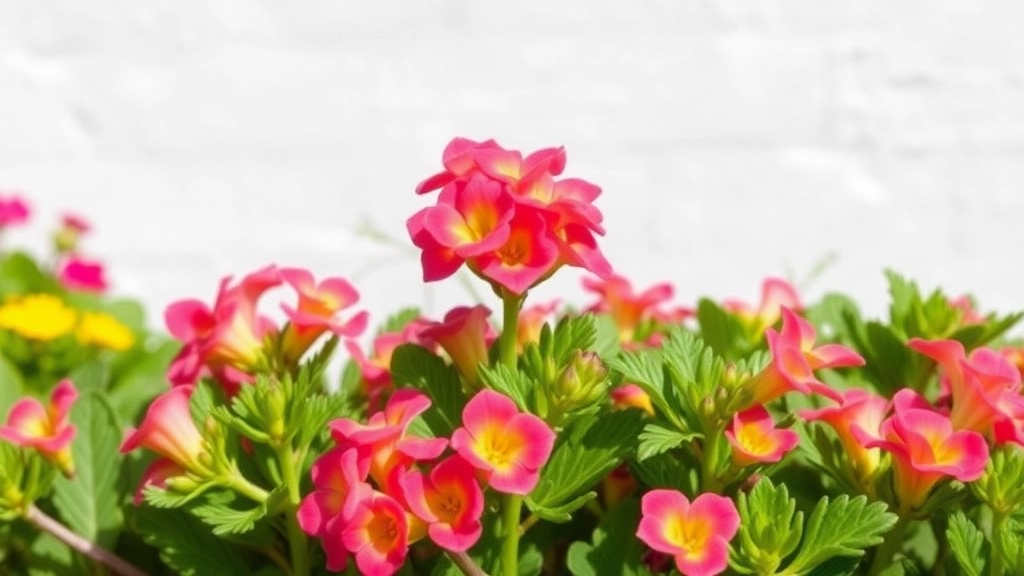Kalanchoe Care in Summer
When it comes to Kalanchoe care in summer, keeping your plant healthy and vibrant is easier than you might think. I’ve found that understanding the basics of watering, sunlight, and temperature can make all the difference. Summer can be a challenging time for many plants, but with a few simple tips, your Kalanchoe can thrive.
Key Aspects of Kalanchoe Care
- Indirect Sunlight: Make sure your Kalanchoe gets plenty of indirect sunlight. Direct sunlight can scorch the leaves, so a bright, shaded spot is ideal.
- Watering: Watering is another crucial aspect; let the soil dry out between waterings to prevent root rot.
- Temperature: Keep an eye on the temperature. Kalanchoes prefer it warm, but not too hot, so try to keep them in a spot where temperatures stay between 60-85°F.
Follow these steps, and your Kalanchoe will thank you!
Key Considerations for Plant Placement
- Sunlight Requirements
- Understand the specific light needs of your plants.
- Some thrive in full sun, while others prefer partial shade.
- Air Circulation
- Ensure good airflow around your plants to prevent disease.
- Avoid crowded areas where humidity can build up.
- Proximity to Water Source
- Place plants near a water source for easy access.
- This will simplify your watering schedule.
- Protection from Elements
- Consider windbreaks or natural barriers.
- This can protect delicate plants from harsh summer winds.
- Soil Drainage
- Ensure the location has good drainage to prevent waterlogging.
- Raised beds or containers can help with this.
By taking these factors into account, you can create an ideal environment for your plants to flourish. For more detailed tips, check out our guide on best soil for Kalanchoe Blossfeldiana. Additionally, understanding the ideal temperature for Kalanchoe Blossfeldiana growth can further enhance your plant care routine.
Watering Schedule and Techniques
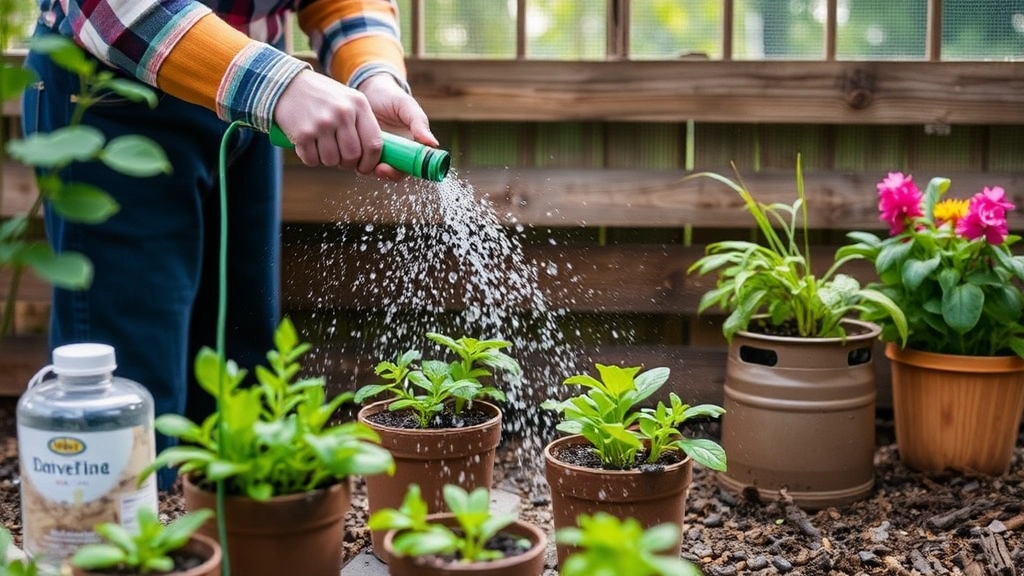
When summer rolls around, one of the biggest worries is how often to water your plants.
You might be asking yourself questions like:
- How do I know if my plants are thirsty?
- Am I overwatering or underwatering?
- What’s the best way to water?
Let’s dive into the essentials of a solid watering schedule and techniques that keep your plants thriving.
Know Your Plants
First off, different plants have different needs. Here’s a quick guide:
- Succulents and Cacti: Water every 2-3 weeks.
- Flowering Plants: Water once a week, or more if it’s super hot.
- Vegetables: Aim for 1-2 inches of water per week, depending on the type.
Timing is Key
Watering early in the morning or late in the evening is best. Why?
- Less evaporation: Cooler temperatures mean more water gets to the roots.
- Fungal prevention: Watering in the evening can lead to damp foliage overnight, which isn’t great for plant health.
Techniques That Work
Here are some effective watering techniques:
- Deep Watering: Water deeply but less frequently. This encourages roots to grow deeper.
- Soaker Hoses: These are fab for even watering over a larger area.
- Drip Irrigation: Targeted watering that saves time and water.
Signs Your Plants Need Water
Keep an eye out for these signs:
- Leaves drooping or wilting.
- Soil pulling away from the pot edges.
- Brown, crispy leaf tips.
Avoiding Overwatering
It’s easy to drown your plants, especially in summer. Here’s how to avoid it:
- Check the soil moisture with your finger. If it’s dry an inch down, it’s time to water.
- Ensure pots have drainage holes.
Soil Requirements and Fertilization
Choosing the right soil and fertilization strategy is crucial for ensuring your plants thrive during the summer months.
Understanding Soil Types
What type of soil are you working with?
- Loamy Soil: This is ideal for most plants. It retains moisture and nutrients while allowing for proper drainage.
- Sandy Soil: Drains quickly but may not hold nutrients well. Consider adding organic matter to improve its quality.
- Clay Soil: Retains moisture but can become compacted. Incorporating compost can help aerate it.
Soil pH Levels
Are you aware of your soil’s pH?
- Acidic Soil (pH < 6): Suitable for plants like blueberries but may require lime for balance.
- Neutral Soil (pH 6-7): Most plants prefer this range.
- Alkaline Soil (pH > 7): Good for certain herbs and vegetables but may need amendments for others.
Fertilization Strategies
How do you nourish your plants?
- Organic Fertilisers: Compost, well-rotted manure, or fish emulsion can enrich soil naturally.
- Synthetic Fertilisers: Quick-release options can provide immediate nutrients but may lead to nutrient burn if overused.
Fertilization Schedule
When should you fertilize?
- Early Summer: A balanced fertiliser can boost growth.
- Mid-Summer: Consider a slow-release option to maintain nutrient levels.
Tips for Effective Fertilization
- Test Your Soil: Regular testing helps you understand nutrient deficiencies.
- Follow Instructions: Always adhere to the recommended application rates on fertiliser packages.
- Water After Application: This helps distribute nutrients evenly.
For more detailed guidance on plant care, check out our Kalanchoe Paddle Plant Care Guide and learn about the Kalanchoe Plant Lifespan and Care Tips.
Managing Sun Exposure and Shade
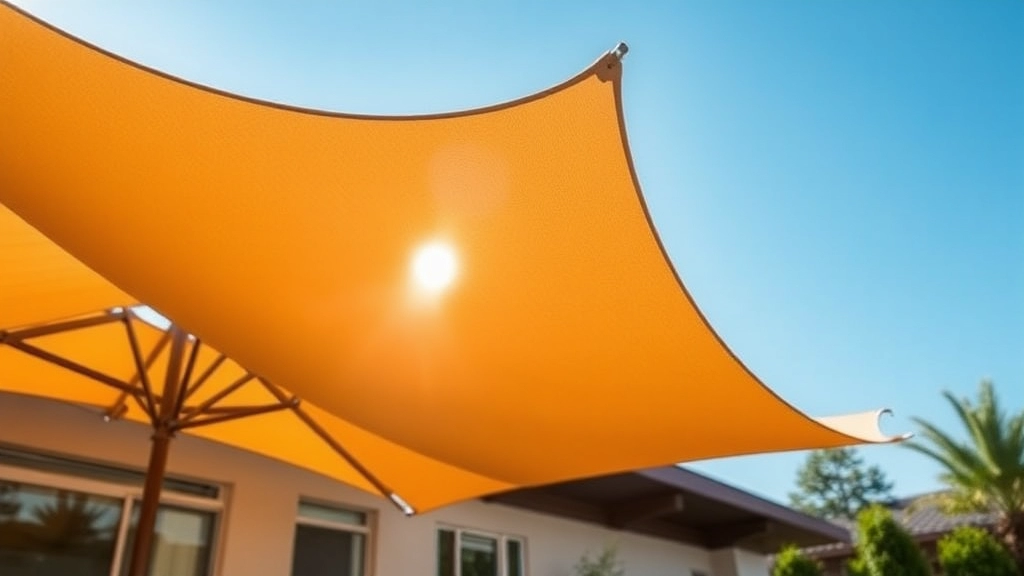
Are you struggling to find the perfect balance between sunlight and shade for your plants this summer?
Understanding how to manage sun exposure is crucial for ensuring your plants thrive. Different plants have varying light requirements, and finding that sweet spot can make all the difference.
Key Considerations for Sun Exposure
- Know Your Plants:
- Full Sun: Some plants, like tomatoes and sunflowers, thrive in direct sunlight for six or more hours a day.
- Partial Shade: Others, like ferns and hostas, prefer dappled sunlight or only a few hours of direct sun.
- Full Shade: Certain plants, such as astilbes, flourish in complete shade.
- Observe Your Space:
- Take note of how sunlight moves across your garden throughout the day.
- Identify areas that receive morning sun versus afternoon sun, as this can impact plant growth.
- Utilise Shade Structures:
- Consider using shade cloths, pergolas, or garden canopies to create a more controlled environment for sensitive plants.
- These structures can help filter harsh sunlight while still allowing some light to reach your plants.
Tips for Managing Shade
- Group Plants Wisely:
- Place shade-loving plants together to maximise their growth potential.
- Conversely, cluster sun-loving plants where they can soak up the sun.
- Rotate Your Containers:
- If you’re using pots, rotate them regularly to ensure all sides receive adequate sunlight.
- Monitor for Signs of Stress:
- Yellowing leaves can indicate too much sun, while leggy growth may suggest insufficient light.
Temperature and Humidity Considerations
As we delve into the specifics of summer care, understanding temperature and humidity is crucial for the health of your plants.
Why Temperature Matters
Plants thrive within specific temperature ranges. Extreme heat can stress them, while cooler nights may hinder growth.
- Ideal Temperature Range: Most summer plants prefer temperatures between 18°C to 24°C during the day and slightly cooler at night.
- Heat Stress Signs: Look for wilting leaves, scorched edges, or stunted growth.
Humidity Levels
Humidity plays a significant role, especially in warmer months.
- Optimal Humidity: A humidity level of 40% to 60% is ideal for most plants.
- Signs of Low Humidity: Brown leaf tips and increased pest activity are common indicators.
Managing Temperature and Humidity
Here are practical tips to create the perfect environment for your plants:
- Use Shade Cloths: Protect your plants from harsh midday sun.
- Misting: Regularly mist plants to increase humidity, especially in dry conditions.
- Grouping Plants: Cluster plants together to create a microclimate with higher humidity.
- Ventilation: Ensure good airflow to prevent overheating and fungal diseases.
Monitoring Tools
Investing in a thermometer and hygrometer can help you keep track of temperature and humidity levels.
- Digital Monitors: These provide real-time data, allowing for quick adjustments.
For more detailed care tips, check out our Kalanchoe Panda Plant Care Guide and our Ultimate Guide to Fuzzy Kalanchoe Care.
Pruning and Deadheading Practices
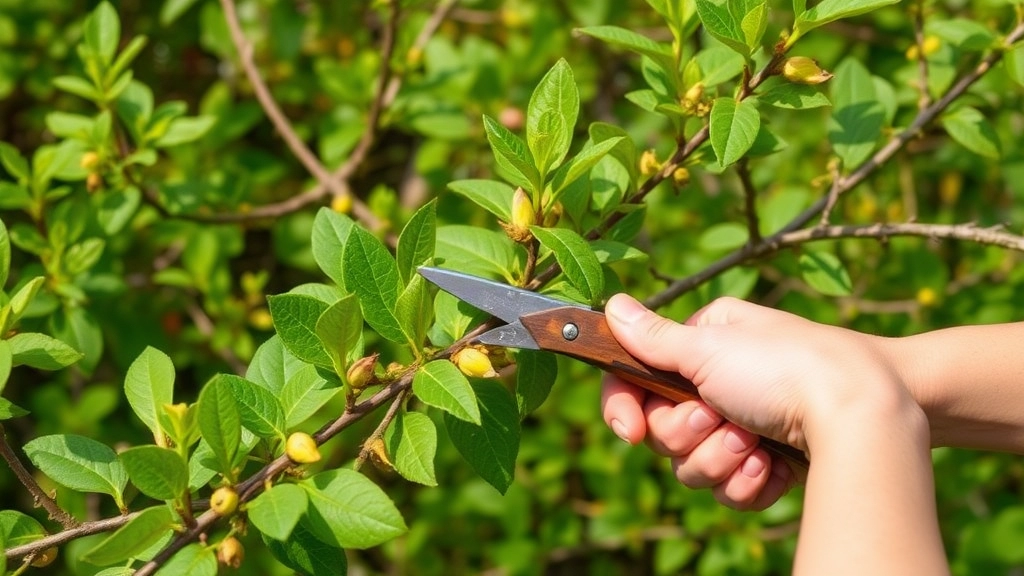
Are your plants starting to look a bit scraggly as summer rolls in?
Pruning and deadheading are crucial for keeping your garden healthy and vibrant during the warmer months.
Why Prune?
- Encourages Growth: Cutting back certain plants helps them grow fuller and stronger.
- Improves Airflow: Reducing overcrowding allows for better air circulation, which can prevent diseases.
- Shapes Your Plants: A good trim can keep your garden looking tidy and well-kept.
When to Prune?
- Spring and Early Summer: Most plants benefit from a good prune before they hit their peak growth.
- After Flowering: For many flowering plants, a post-bloom trim encourages a second round of blooms.
Deadheading 101
- What is Deadheading? It’s simply removing spent flowers to promote new growth.
- How to Do It:
- Snip off the faded blooms just above the first set of healthy leaves.
- Use clean, sharp scissors or pruners to avoid damaging the plant.
Tips for Effective Pruning and Deadheading
- Know Your Plants: Different plants have different needs. Research what works best for each type.
- Be Mindful of Timing: Avoid pruning during extreme heat or cold; early morning or late afternoon is best.
- Use the Right Tools: Keep your tools sharp and clean to make the process smoother.
For instance, I once had a rose bush that was looking a bit sad. After a good prune and some deadheading, it exploded with blooms in no time.
Pest and Disease Prevention
As we delve into summer care, it’s crucial to address a common concern: pests and diseases that can threaten your plants.
Why is Pest and Disease Prevention Important?
Pests like aphids, spider mites, and whiteflies can wreak havoc on your garden, while diseases like powdery mildew and root rot can quickly destroy your plants.
Effective Prevention Strategies
- Regular Inspections
- Check your plants weekly for any signs of pests or disease.
- Look under leaves and at the base of plants, as these are common hiding spots.
- Encourage Beneficial Insects
- Ladybugs and lacewings are natural predators of common pests.
- Plant flowers like marigolds and dill to attract these helpful insects.
- Maintain Healthy Soil
- Healthy soil leads to strong plants that are more resistant to pests and diseases.
- Use organic compost to enrich your soil and improve its structure.
- Proper Watering Techniques
- Avoid overwatering, as this can lead to root rot.
- Water in the early morning to allow foliage to dry throughout the day. For more detailed advice, check out our optimal watering tips.
- Use Organic Pesticides
- If you notice an infestation, consider using neem oil or insecticidal soap.
- Always follow the instructions on the label for safe application.
- Rotate Crops Annually
- Changing the location of your plants each year can help prevent soil-borne diseases.
- Remove Debris and Weeds
- Keep your garden clean by regularly removing dead leaves and weeds, which can harbour pests. Learn more about preventing issues with our guide on why Kalanchoe leaves die.
Signs of Trouble
Stay vigilant for signs of trouble, such as yellowing leaves, stunted growth, or unusual spots.
Repotting and Transplanting Tips
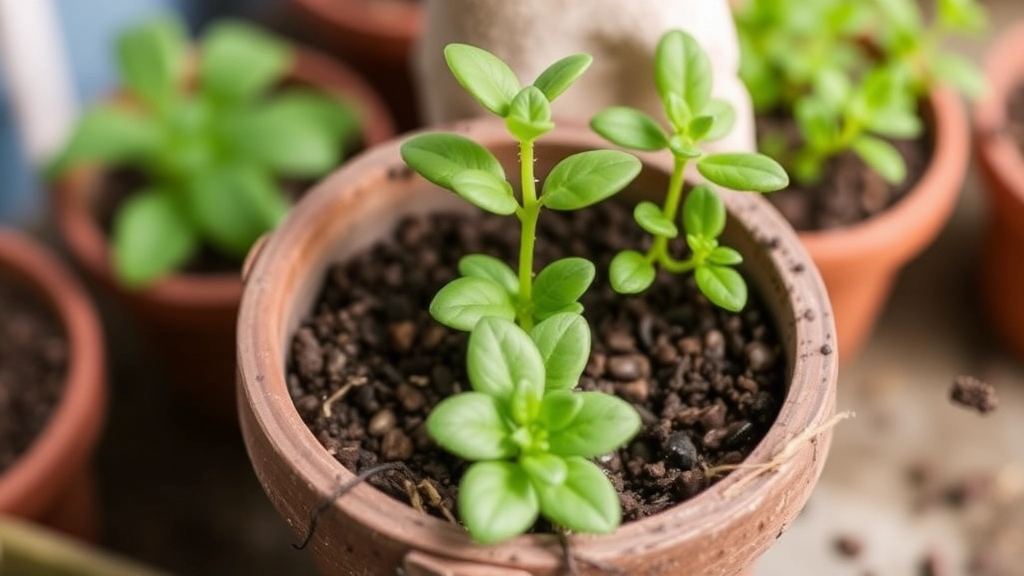
So, you’ve got a plant that’s outgrown its pot or isn’t thriving where it is.
Repotting and transplanting can feel daunting, but it’s a game-changer for your summer garden.
Here’s how to make it a smooth process:
When to Repot
- Signs of root-bound: If you see roots coming out of the drainage holes, it’s time.
- Stunted growth: If your plant seems to have hit a wall, it might need more space.
- Soil degradation: If the soil looks compacted or has a funky smell, a fresh start is needed.
How to Repot
- Choose the right pot: Go for one that’s 1-2 inches larger in diameter.
- Prepare your soil: Use a mix suited for your plant type—think cactus mix for succulents, potting soil for others.
- Gently remove the plant: Loosen the edges with a knife if it’s stuck.
- Trim any damaged roots: Snip away any brown or mushy bits.
- Place in the new pot: Fill in around the roots with fresh soil and water it well.
Transplanting Tips
- Timing is key: Early morning or late afternoon is best to avoid shock.
- Dig a proper hole: Make it deep and wide enough for the roots to spread.
- Water before and after: Keep the soil moist but not soggy to help with settling in.
Aftercare
- Monitor closely: Check for wilting or yellowing leaves.
- Adjust watering: New digs might need a bit more attention at first.
Common Summer Care Mistakes
As we delve deeper into summer plant care, it’s essential to address some common mistakes that can hinder your plants’ growth and vitality.
Are you overwatering your plants?
This is a frequent issue many gardeners face during the hotter months.
Here are some key mistakes to avoid:
- Overwatering:
Many believe that more water equals healthier plants.
In reality, overwatering can lead to root rot.
Always check the soil moisture before watering. - Ignoring Soil Quality:
Poor soil can drain nutrients and moisture.
Regularly amend your soil with organic matter to boost its quality. - Neglecting Sun Exposure:
Not all plants thrive in direct sunlight.
Know your plants’ light requirements to prevent sunburn or wilting. - Skipping Fertilization:
Nutrient depletion can occur in summer.
Use a balanced fertiliser to replenish essential nutrients. - Inconsistent Pruning:
Failing to deadhead or prune can lead to overcrowded plants.
Regular pruning promotes better airflow and encourages blooming. - Ignoring Pests:
Summer is prime time for pests.
Regularly inspect plants and treat infestations early to prevent damage. - Forgetting to Mulch:
Mulching helps retain moisture and suppress weeds.
Apply a layer of mulch around your plants to keep the soil cool.
If you’re dealing with specific issues like drooping leaves, you might find our guide on how to fix drooping Kalanchoe leaves helpful. Additionally, for those interested in propagation, check out our guide on propagating Kalanchoe from leaves.
Seasonal Adjustments for Optimal Growth
As summer rolls in, you might be wondering how to keep your plants thriving amidst the heat.
What adjustments should you make?
Here’s a quick rundown to ensure your green friends are living their best life:
FAQs on Kalanchoe Care in Summer
How often should I water my Kalanchoe during summer?
In summer, Kalanchoe should be watered every 2-3 weeks. Ensure the soil is dry an inch down before watering again.
What is the best time of day to water Kalanchoe?
Watering early in the morning or late in the evening is ideal. This minimizes evaporation and ensures more water reaches the roots.
How can I tell if my Kalanchoe needs water?
Look for signs like drooping or wilting leaves, soil pulling away from the pot edges, and brown, crispy leaf tips.
How do I avoid overwatering my Kalanchoe?
Check the soil moisture with your finger. If it’s dry an inch down, it’s time to water. Also, ensure that pots have drainage holes to prevent water from accumulating.
What kind of sunlight does Kalanchoe need in summer?
Kalanchoe thrives in bright, indirect sunlight. Too much direct sun can cause leaf burn, while too little light can result in leggy growth.
Can I use shade structures for my Kalanchoe?
Yes, using shade cloths or garden canopies can help filter harsh sunlight and create a more controlled environment for your Kalanchoe.
Should I prune my Kalanchoe in summer?
Yes, pruning can encourage growth and improve airflow. It’s best to prune in spring and early summer or after flowering to promote a second round of blooms.
How do I properly prune my Kalanchoe?
Use clean, sharp scissors or pruners to trim back leggy growth and remove spent flowers. This helps keep the plant tidy and encourages new growth.
When should I repot my Kalanchoe?
Repot your Kalanchoe if you notice signs of being root-bound, stunted growth, or soil degradation. Typically, this is needed every 1-2 years.
How do I repot my Kalanchoe?
Choose a pot 1-2 inches larger in diameter, prepare a suitable soil mix, gently remove the plant, trim any damaged roots, and place it in the new pot with fresh soil. Water it well afterward.
What are the signs that my Kalanchoe is stressed after repotting?
Monitor for wilting or yellowing leaves. These can indicate that the plant is adjusting to its new environment and might need some extra care.
Can I transplant Kalanchoe directly into the garden during summer?
Yes, but do so in the early morning or late afternoon to avoid transplant shock. Ensure the hole is deep and wide enough for the roots to spread, and water before and after transplanting.
References
-
How to Avoid Overwatering Your Houseplants
-
Pruning Basics: Why, When, and How to Prune Your Plants
-
Repotting Houseplants: How and When to Repot
